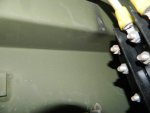blhar15
Active member
- 122
- 11
- 28
- Location
- Waterloo, IA
I have a nice MEP802A that will be trailer mounted for portable power. The manuals are kind of vague on power distribution and connections. I see there are military power distribution boxes available and various cables. I am trying to get a picture of how one of these would be wired up and to distribute power. For instance I have a couple of military shelters that have an input for genset power, but not sure how to get the correct cable for the shelter from their to the generator. It must go through some sort of distribution panel. I am assuming the distribution panel is hard wired to the genset, then standard type power cables with connectors go from the distribution panel to the shelter.
Any input would be helpful or pictures.
Thanks
Any input would be helpful or pictures.
Thanks




